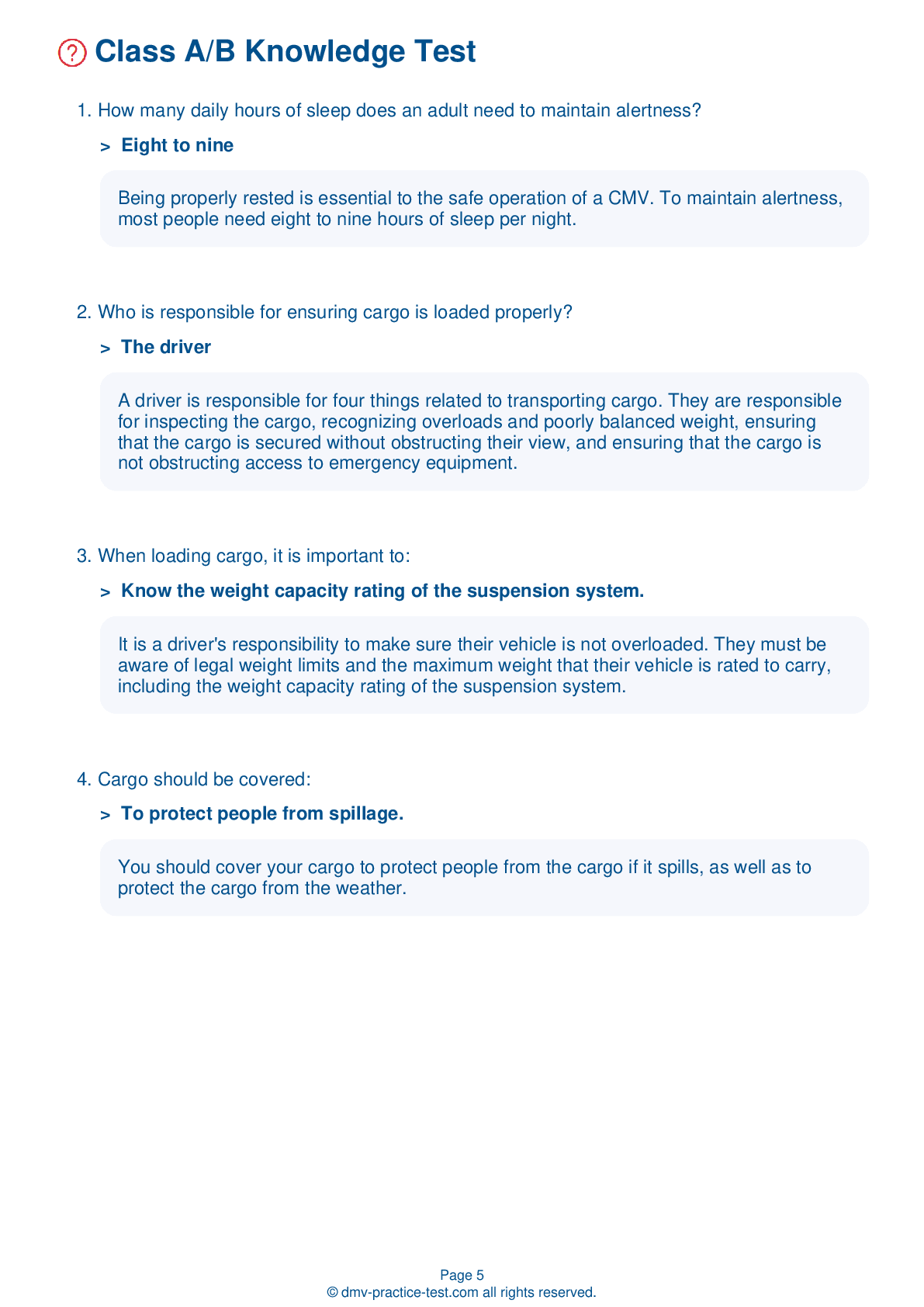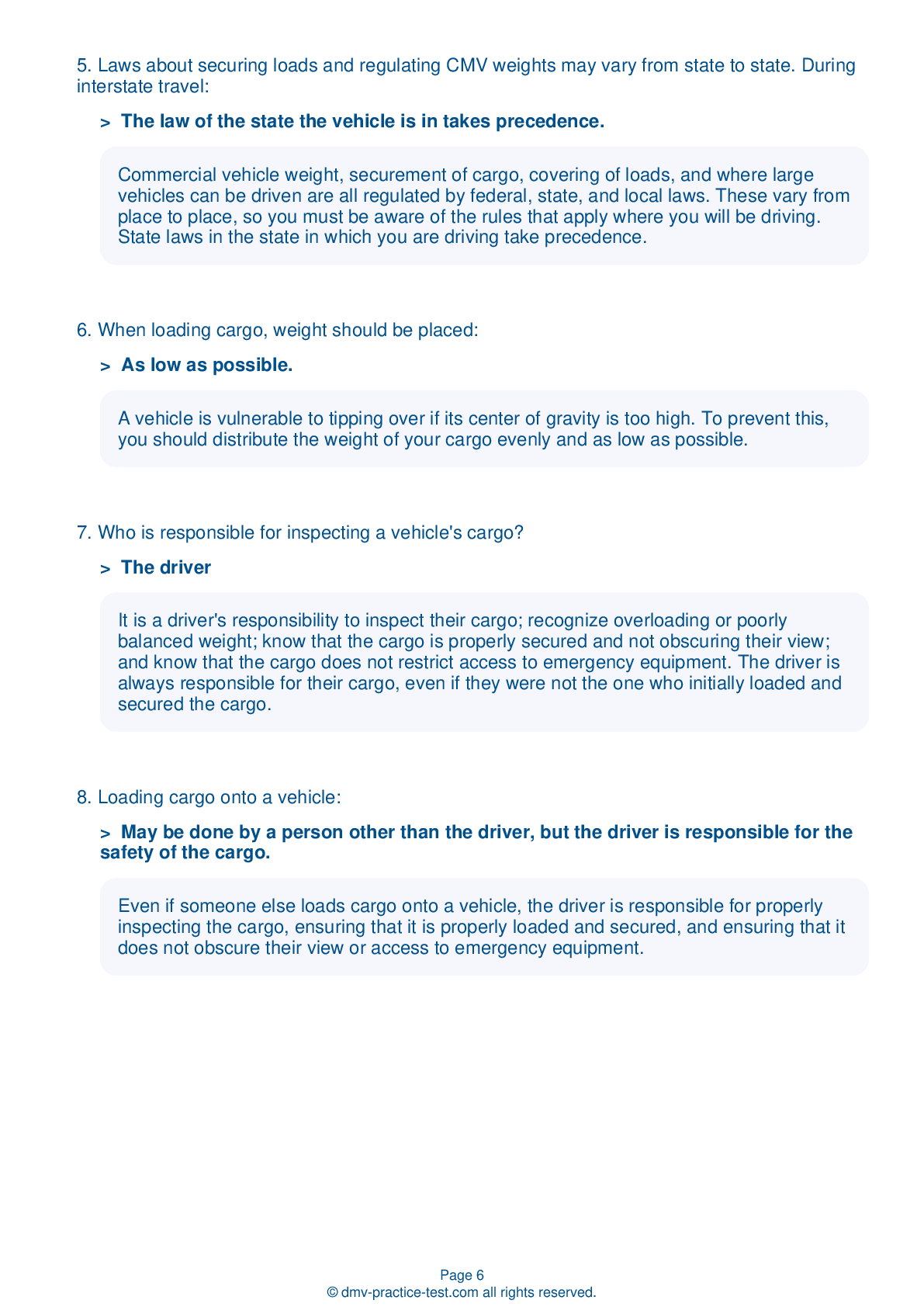Bus Driver Testing | Connecticut 2026 #2 Page 2 of 3
Train for FREE online with our CT bus CDL test. The official exam test consists of several obligatory parts, with all of them checking your knowledge of different blocks of road rules. If you need to obtain a license in Connecticut in 2026, learn how to become a bus driver and then practice as much as possible. Free sample tests published on our website will help you check and improve your knowledge and boost your grades. Please bear in mind that DMV requirements for a bus driver may vary from state to state.
8 . If you are stopped at a railroad crossing while operating a school bus, you should:
When stopped at a railroad crossing while operating a school bus, do not rely only on signals to tell you if a train is approaching. You should silence all passengers, open the front door, and look and listen for trains. After a train has passed, you should check for another train approaching from either direction before you proceed across the tracks.
9 . When checking the springs during a vehicle inspection, do all of the following, except:
When checking the springs as part of the vehicle inspection test, you should look for missing, shifted, cracked, or broken leaf springs, as well as broken or distorted coil springs. If the vehicle is equipped with torsion bars, torque arms, or other types of suspension components, ensure that they are not damaged and are mounted securely.
10 . When entering traffic on an expressway during the skills test, you should:
During the on-road driving skills test, you may be asked to enter an expressway. Before doing so, you must check traffic, use proper signals, and merge smoothly into the proper lane.
11 . When exiting a vehicle, a driver should:
When exiting your vehicle during the basic vehicle control skills test, you must face the vehicle and maintain three points of contact at all times. If your testing vehicle is a bus, you must maintain contact with the handrail. Exiting the vehicle incorrectly may result in automatic failure of the basic vehicle control skills test.
12 . During a basic vehicle control skills test, what is considered a look?
A driver uses a look when they open their door, leave their seated position, and walk to the back of the vehicle to check its position. During the straight line backing exercise, a driver may not exceed one look. During any other exercise, a driver may not exceed two looks.
13 . When inspecting engine compartment belts during the vehicle inspection test:
When checking the engine compartment during the vehicle inspection test, you must check the power steering, water pump, alternator, and air compressor belts. In addition to cracks and frays, you should check the belts for snugness, allowing up to three-quarters of an inch of play at the center of each belt. If any of these items are not belt-driven, you must identify them and ensure that their components are operating properly, are not damaged or leaking, and are mounted securely.
14 . The overhead inside rearview mirror should be positioned to show:
The top portion of the overhead inside rearview mirror should be positioned to display the top of the bus's rear window. This mirror positioning should allow the driver to see all of the students on the bus, including the heads of the students sitting immediately behind the driver.
See the exact questions that will be on the 2026 Connecticut DMV exam.
99.2% of people who use the cheat sheet pass the FIRST TIME
Lillian MCcranie explains how our CDL study guide was helpful in passing the exam and recommends it to everyone.
Cameron tells us how he purchased the CDL exam, and found it to be a useful tool which helped him pass the exam and find a job.



